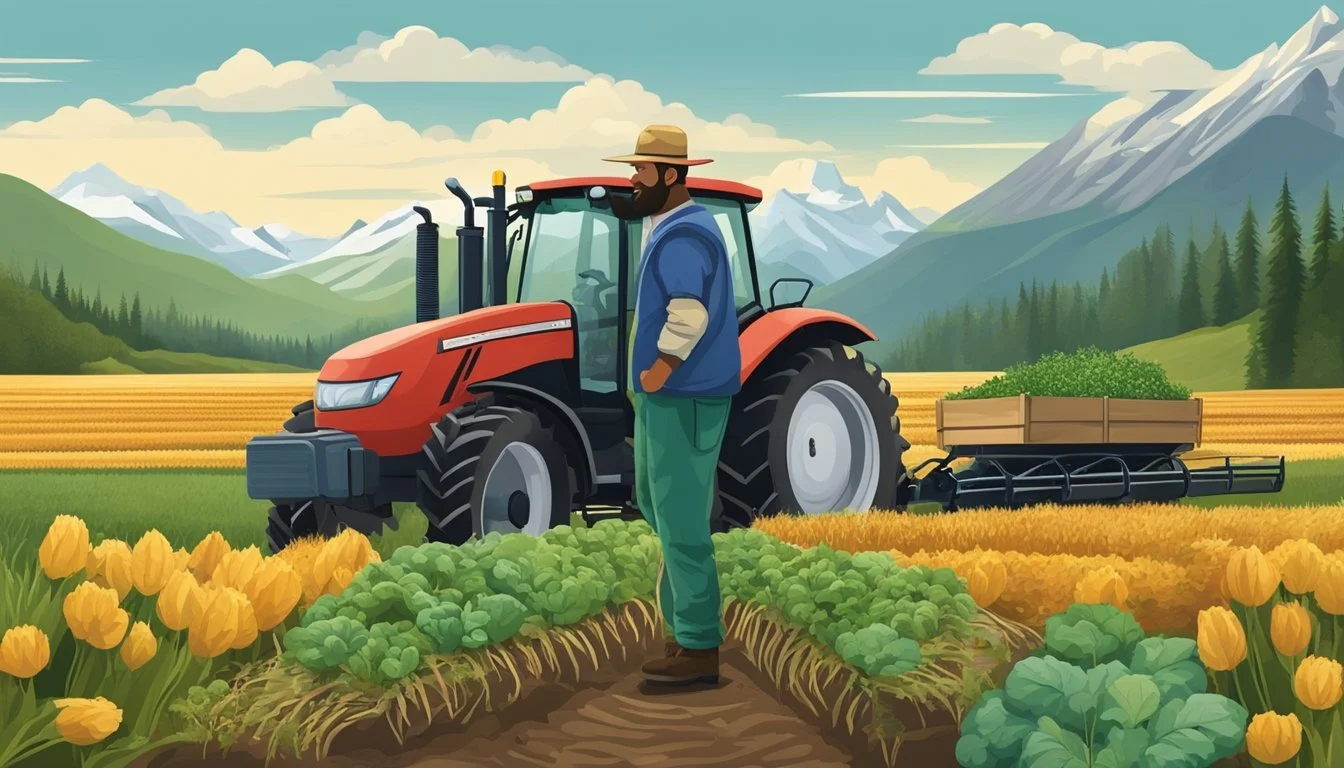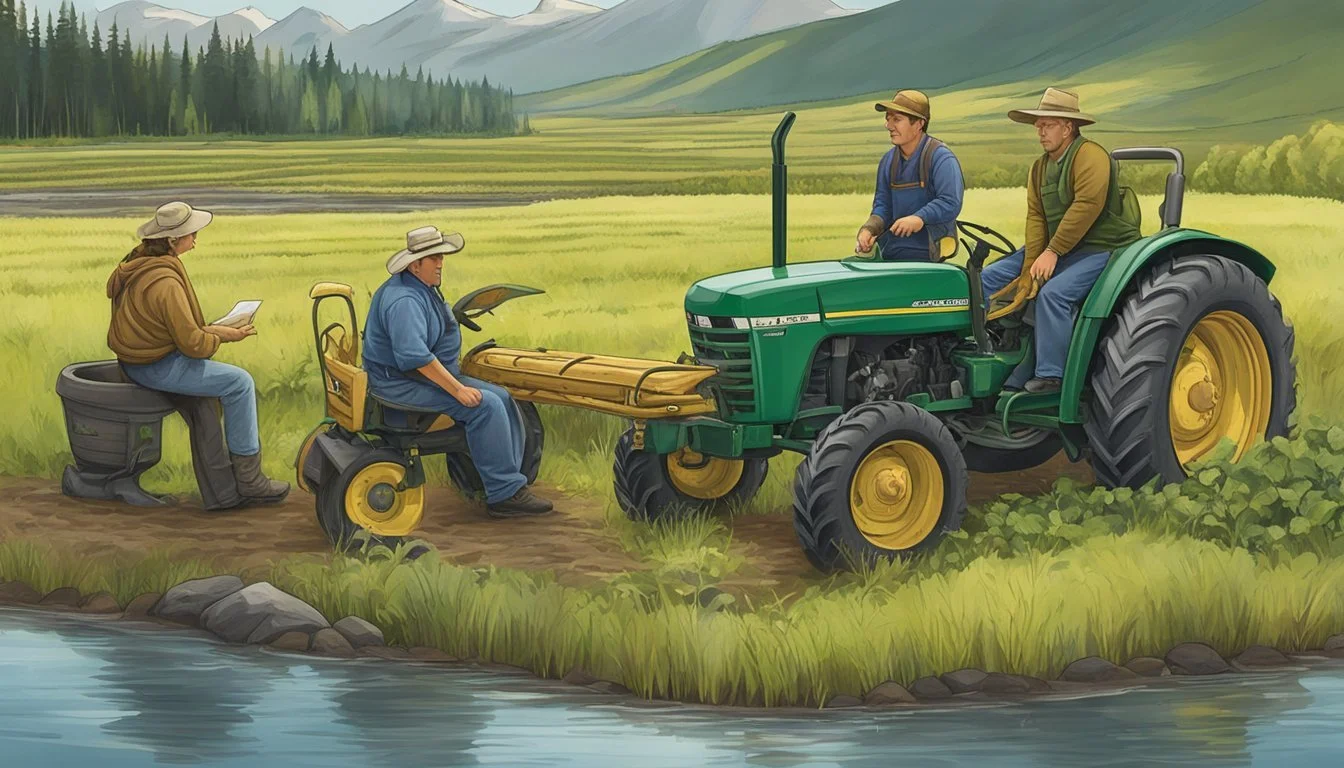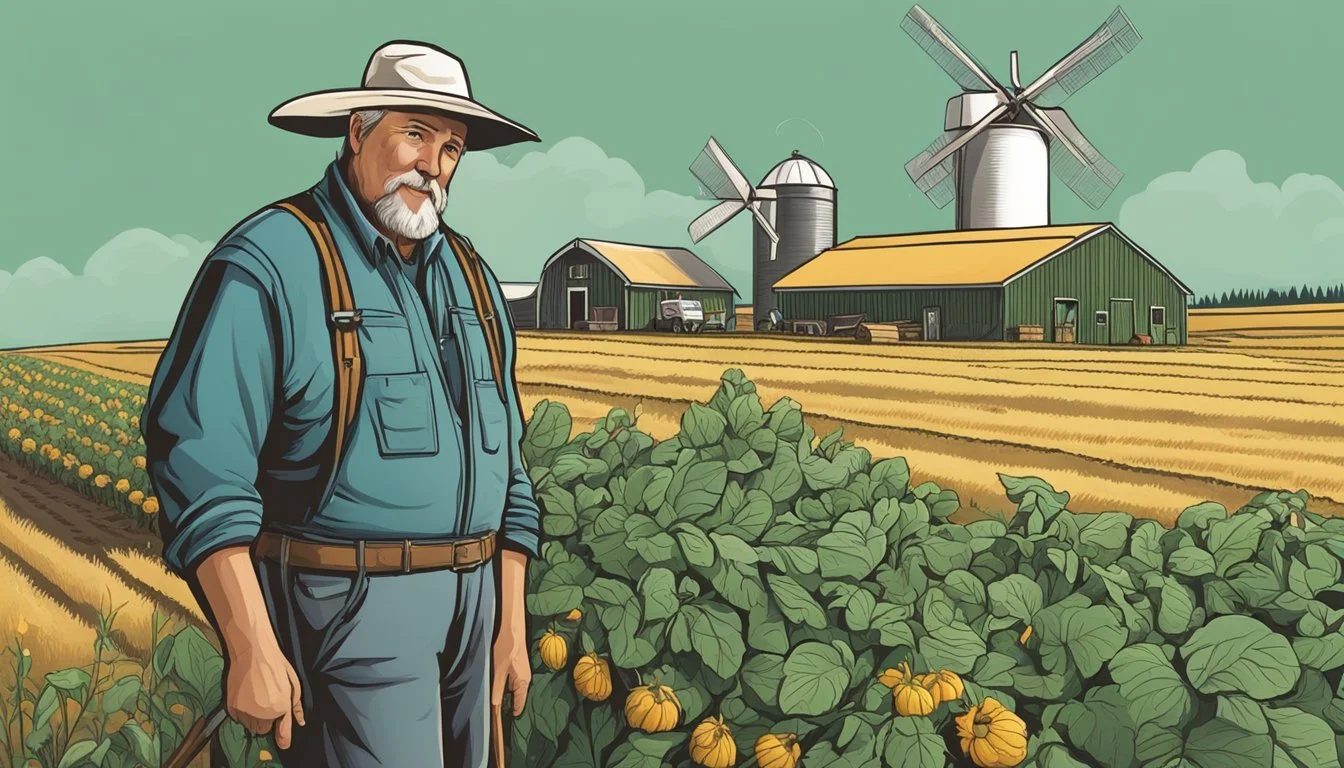Farming Grants Alaska
Opportunities for Agricultural Funding
Alaska presents unique opportunities and challenges for farmers and agricultural businesses due to its vast and varied landscape, ranging from the temperate rainforests of the Southeast to the arctic tundra of the North. Recognizing these unique conditions, various grants and support programs are made available by state and federal agencies to bolster local agriculture. The State of Alaska's Division of Agriculture is actively engaged in helping individuals and organizations through various grant initiatives designed to support Alaska's food and farm businesses.
Farming grants in Alaska are particularly crucial, given the high costs associated with transporting feed and the potential scarcity of local hay and grain. To combat these challenges, the state has introduced grant funds available to those involved in the raising of livestock and other agricultural practices. These grants are aimed at offsetting increased production costs and encouraging infrastructure development. Meanwhile, the U.S. Department of Agriculture's Farm Service Agency (FSA) extends its support to the Alaskan agricultural community through loans, disaster relief, commodity price support, and other resources, ensuring farmers have access to necessary capital and services.
Dedicated initiatives like Infrastructure Grants and Simplified Equipment-Only Grants demonstrate a concerted effort to improve the state's agricultural capacity. These efforts reflect the government's understanding of the importance of self-sustainability and food security in Alaska. By granting financial aid to eligible entities, Alaska fortifies its agricultural foundations and champions the perseverance of its farming communities in the face of unique environmental challenges.
Understanding Alaska's Agricultural Landscape
Alaska's agricultural sector, while distinct and facing unique challenges, forms an integral part of the state's economy and culture. With government support through agencies like the Division of Agriculture, farms and ranches navigate the peculiarities of the region's climate to contribute to local and national markets.
Role of Agriculture in Alaska's Economy
Agriculture in Alaska is a burgeoning industry contributing to the diversification of the state's economy, traditionally reliant on oil and fishing. The sector includes everything from traditional farming and ranching to innovative aquaculture operations. Although it is not the largest sector, agriculture provides a growing number of Alaskans with employment and has the potential to improve food security within the state.
The Alaska Division of Agriculture
The Alaska Division of Agriculture actively promotes the growth of agricultural pursuits in the state. It administers competitive grants, like infrastructure grants and equipment-only grants, to enhance production and efficiency on farms and ranches. The aim is to bolster the quality and quantity of locally grown specialty crops including fruits, vegetables, and nursery items.
Unique Challenges for Alaskan Farmers
Farmers in Alaska face considerable challenges:
Climate: The harsh and diverse climate results in a shorter growing season and restrictions on the types of produce that can be cultivated.
Logistics: Transportation of supplies is more complicated due to Alaska's vast geography and limited infrastructure.
Soil Quality: With no Class 1 soils, farmers often need to extensively modify and enrich local substrates to grow crops.
Understanding the unique characteristics of Alaska's agricultural environment is crucial for anyone interested in the sector, whether they are aspiring farmers, policy makers, or consumers supporting local industries.
Overview of Farming Grants in Alaska
Alaska offers a variety of farming grants aimed at supporting local producers and communities. These grants focus on reducing the costs and risks associated with agricultural development.
Types of Grants Available
The State of Alaska provides competitive grants for a range of agricultural purposes to cater to the diverse needs of its farmers and ranchers. Notably, there are two primary grant types managed by the Alaska Division of Agriculture:
Infrastructure Grants focus on the development and upgrading of agricultural infrastructure, offering substantial support to enhance food security.
Simplified Equipment-Only Grants provide funding specifically for the purchase of farming equipment, thereby helping to modernize farming operations.
Eligibility Criteria for Applicants
Applicants seeking grant funding must typically meet certain criteria, which include:
They must be Alaska residents who are actively engaged in agricultural production.
They should be raising animals or cultivating crops primarily for local consumption, illustrating a commitment to strengthening Alaska's food supply chain.
Nonprofit organizations and eligible entities that directly support the agricultural sector may also qualify, provided they have a clear objective aligned with grant funding priorities.
Grant Funding Objectives
Grant funds have distinct objectives that are closely aligned with Alaska's agricultural priorities:
To assist farmers and ranchers struggling with rising operational costs, particularly in the realm of livestock feed.
To enhance food security by supporting the agricultural sector with financial aid and marketing support.
To encourage growth within the private sector by offering incentives and reducing expansion-related risks for producers.
Funding aims to fortify Alaska's agriculture, ensuring sustainable growth and the persistent delivery of resources to the state’s communities.
Key Agencies and Support Networks
In Alaska, farmers and food producers can find robust support for agricultural projects through key governmental agencies and a network of nonprofits that provide resources, education, and financial assistance programs.
Alaska Division of Agriculture
The Alaska Division of Agriculture promotes and encourages development of the agriculture industry across the state. Multiple grant programs are managed by the division to assist with the needs of Alaskans who raise livestock and crops, especially in light of challenges like increased feed costs. This agency is a primary point of contact for initiatives like the Infrastructure Grants and Simplified Equipment-Only Grants intended to bolster local food production and farm businesses.
Contact Information:
Web: dnr.alaska.gov
Phone: (907) 269-8400
Fax: (907) 269-8901
USDA Programs and Services
The USDA Farm Service Agency's Alaska State Office provides a comprehensive range of programs and services to support local agriculture. From federal funding avenues such as competitive grants, they direct resources to enhance the food security and farming infrastructure of Alaska. Eligible individuals can seek advice from county executive directors for specific USDA-initiated programs.
Regional Executive Contacts:
Northern County: Robert Garcia, (907) 895-4242, [email protected]
Southern County: Hazen Kazaks, (907) 761-7773, [email protected]
Local Nonprofits and Educational Outreach
Numerous nonprofits and educational institutions in Alaska are engaged in supporting the agricultural sector through knowledge dissemination, training, and resource provision. These entities collaborate with state departments and the federal government to amplify their impact on local agriculture. They offer a wealth of information and assistance programs, both practical and academic, to help stabilize and enhance agricultural pursuits in the state's unique environment.
Key Focus Areas:
Community-based agricultural education
Farm equipment access programs
Hands-on training and workshops
Application Guidelines for Farming Grants
When applying for farming grants in Alaska, applicants should focus on creating detailed proposals, understanding the specific steps of the application process, and adhering to the set deadlines to improve their chances of success.
Preparing a Winning Grant Proposal
A strong grant proposal clearly outlines the objectives and the impact of the project. Applicants must develop comprehensive plans that include budgeting, scope, and outcomes. Financial projections and strategies for long-term sustainability should be part of the planning. Aspects such as value to the community and innovation in farming techniques are often considered favorably.
Key elements of a proposal may include:
Executive Summary
Project Description
Detailed Budget
Evidence of Support from Other Sources
Sustainability Plan
Understanding the Application Process
Applicants must diligently follow the application instructions provided by the Alaska Division of Agriculture. The process often begins with registering with the appropriate state department, followed by completing all required forms and gathering necessary documents. Support documents may include proof of land ownership, details of current agricultural operations, and past financial records for existing farms. They should also prepare to provide information about the livestock or crops involved in their proposal.
Typical steps of the application process:
Register with the grant program.
Complete all necessary application forms.
Collect and attach all required supporting documentation.
Review for accuracy and completeness before submission.
Important Deadlines and Submission Tips
Meeting the deadlines is crucial as late submissions can be grounds for disqualification. Most grant programs have a strict timeline. For instance, the Food Security Agriculture Incentive Grant Program had funding available in fiscal year 2023, indicating the presence of annual cycles for some grants. Applicants should check the official Division of Agriculture website or the Alaska Farm Bureau for the most current dates.
Submission Tips:
Submit before the deadline to avoid last-minute technical issues.
Ensure that the application package is complete and meets all the requirements.
Confirm receipt of the application after submission.
By adhering to guidelines and preparing meticulously, applicants can enhance their prospects of acquiring funding to support their agricultural ventures in Alaska.
Project Implementation and Management
When managing agricultural grants in Alaska, it's crucial to ensure an effective use of funds, consistent monitoring, and reporting, alongside planning for sustainability and conservation.
Effective Use of Funding
Funding Allocation: Recipients must allocate funds precisely as outlined in their grant proposals. For infrastructure projects, a cost-sharing requirement of 50% is typical, unless the recipient qualifies for reduced matching under specific categories such as small or historically underserved businesses.
Expenditure Tracking: It is vital to maintain detailed records of all expenditures to validate that funds are used for intended purposes, aligning with the project’s goals and federal regulations.
Monitoring and Reporting Requirements
Regular Updates: Grantee's are expected to provide regular project updates, which may include financial statements, progress reports, and compliance documents.
Reporting Interval Report Type Content Expected Quarterly Financial Report Use of funds and budgetary compliance Bi-Annually Progress Report Milestones reached and project status Annually Compliance Document Adherence to grant terms and conditions
Auditing: Grant recipients may be subject to audits to ensure the proper use of public funds and adherence to project scopes.
Sustainability and Long-term Planning
Conservation Practices: Programs should incorporate sustainable agriculture and conservation practices to ensure long-term viability of farming in Alaska. This includes addressing climate resilience and environmental impact.
Future Funding: Farmers and organizations are encouraged to develop strategies for sustaining their projects post-grant, which may necessitate seeking additional funds or adjusting operational models to continue progressing without financial support from the grant.
Special Programs and Initiatives
Alaska's agricultural sector benefits from a variety of grants supporting specific areas such as specialty crop development, conservation efforts, and initiatives targeting young and beginning farmers. These programs offer financial assistance to sustain and improve farming in the state, directly impacting local food security and environmental care.
Focused Support for Specialty Crops
The Micro-Grants for Food Security Program provides essential funding aimed at enhancing the production of specialty crops in Alaska. Administered by the State of Alaska's Division of Agriculture, this program offers grants sourced from the U.S. Department of Agriculture. Farmers can receive support for projects that increase the availability and variety of locally grown food items, a significant step for Alaska's unique agricultural landscape.
Conservation and Environmental Grants
Conservation and environmental stewardship are pivotal in Alaska's agriculture grants. With offerings such as the infrastructure and equipment-only grants, entities can invest in sustainable practices that benefit both the environment and the agricultural community. These funds, part of the competitive grants awarded by the Alaska Division of Agriculture, encourage practices that reduce greenhouse gas emissions and improve indoor air quality, reflecting a commitment to conserving Alaska's natural resources.
Youth and Beginning Farmer Programs
Supporting new entrants and young individuals in agriculture is crucial for the longevity of the industry. The Alaska Farm Bureau's initiative to award grants up to $11,000 demonstrates a clear focus on empowering the next generation of farmers. This financial assistance can be used for various farming activities, training, obtaining youth loans, and more, ensuring that young farmers have the foundation they need to thrive in the Alaskan agricultural sector.
Additional Resources and Training Opportunities
In Alaska, a variety of training opportunities, resources, and support systems are available to assist farmers and agricultural businesses. These offerings are tailored to enhance the skills, knowledge, and economic success of those involved in the state's farming industry.
Educational Workshops and Training Events
Educational workshops and training events provide farmers with the necessary information to stay current with industry standards and practices. These events might cover topics from animal health to sustainable farming techniques. Organizations like the Alaska Cooperative Extension Service offer workshops across the state that are essential for new and experienced farmers alike.
Research and Development Assistance
Research and development assistance can be crucial for agricultural innovation and ensuring the health of crops and livestock. Entities such as the USDA and the Alaska Department of Natural Resources, Division of Agriculture give grants and resources that foster advanced agricultural research. This assistance supports farmers in developing more efficient, productive farming methods beneficial for both the economy and environment.
Marketing and Business Planning Support
Marketing and business planning are vital for the stability and growth of any agricultural endeavor. Support in this area ensures that farmers and agricultural businesses can effectively reach their target market and plan for long-term sustainability. Alaska Farm Bureau and other agricultural development agencies offer resources for comprehensive business planning and marketing strategies that help farmers establish a strong presence in both local and broader markets.









